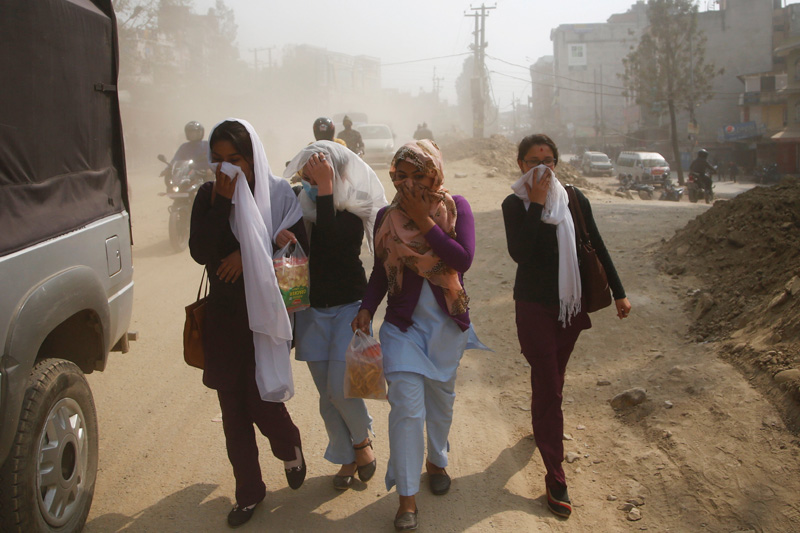Doctors, stakeholders call for collective move to lower air pollution in Kathmandu
KATHMANDU: Experts have expressed serious concern over the increasing level of air pollution in Kathmandu valley while calling for concerted efforts to lower it.
At a “Science-Policy Dialogue on Health Impacts of Air Pollution in Kathmandu Valley” organized today by the Ministry of Health and Population (MoHP), Department of Environment (DoEnv), World Health Organization (WHO) and Clean Energy Nepal (CEN), the experts viewed that the matter needs to be sensitized and called for new policies to control air pollution.
The purpose of the dialogue was to discuss the health impacts of air pollution among the stakeholders and measures required to address the problem of air pollution in the Kathmandu Valley.
On the occasion, Pulmonologist and Critical Care Specialist Arjun Karki pointed out lapses on effective implementation of policies and recommendations on the matter. Karki also laid emphasis to the build task force and make an alliance with academicians, professionals, activists and journalists to monitor the situation.
Likewise, Chairman of Nepal Medical Council and Cardiologist Bhagawan Koirala highlighted the need to generate voices against air pollution and enforce the existing policies. Koirala said that 40 per cent of respiratory disorder deaths and 25 per cent of cardiovascular deaths in Nepal are caused by air pollution.
Prof Sanjay Nath Khanal, a consultant from CEN, shared the findings of WHO/Kathmandu University study in terms of averted deaths and life-year gains with the improvement in air quality based on policy interventions.
World Health Organisation (WHO) Nepal Representative Dr Rajesh S. Pandav stated that COVID-19 is linked to air pollution as it is also a respiratory disease, so people exposed to poor air quality are more susceptible to COVID-19.
Dr Jageshwor Gautam, Chief of Health Coordination Division and Spokesperson of MoHP, made commitment to address the health impacts caused by air pollution. Children, road-side workers, women and elderly people are the most vulnerable groups linked to air pollution, he added.






